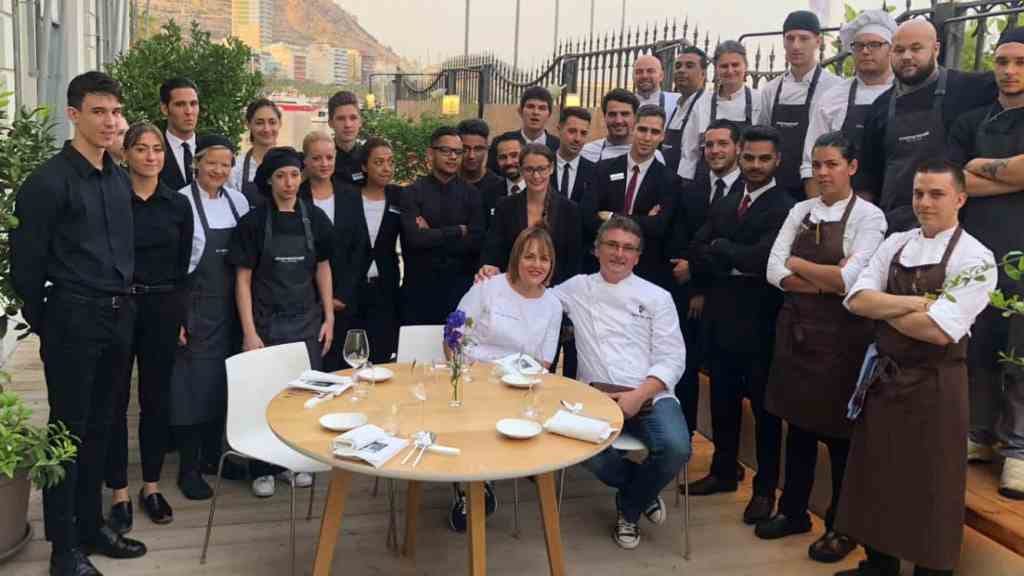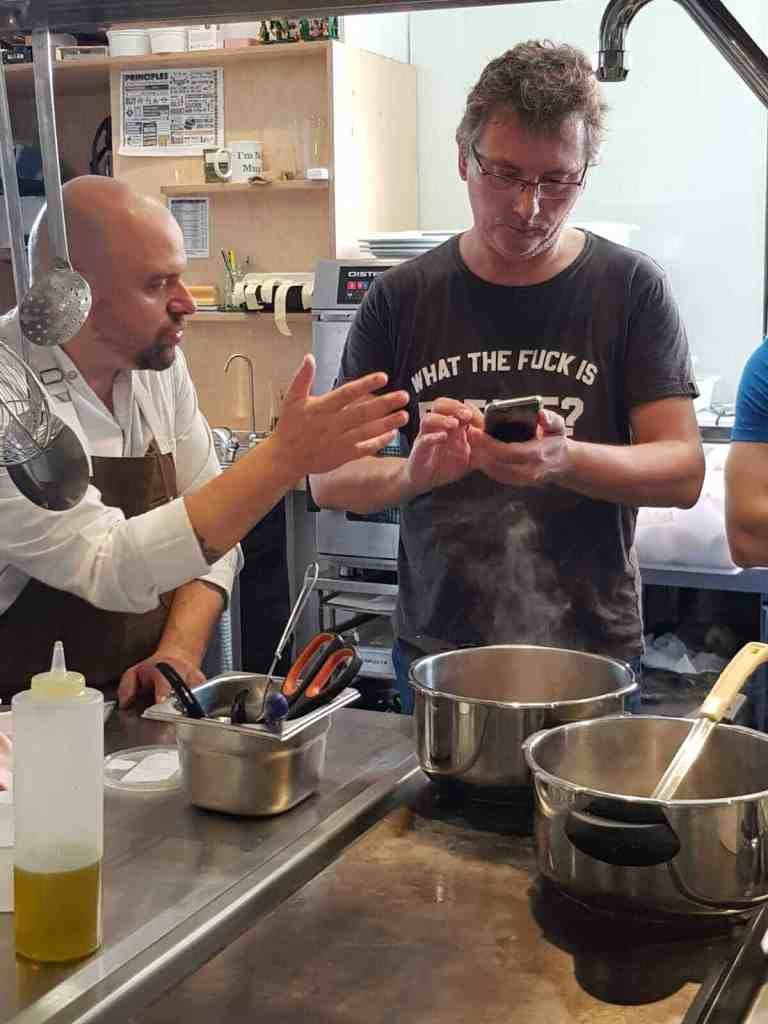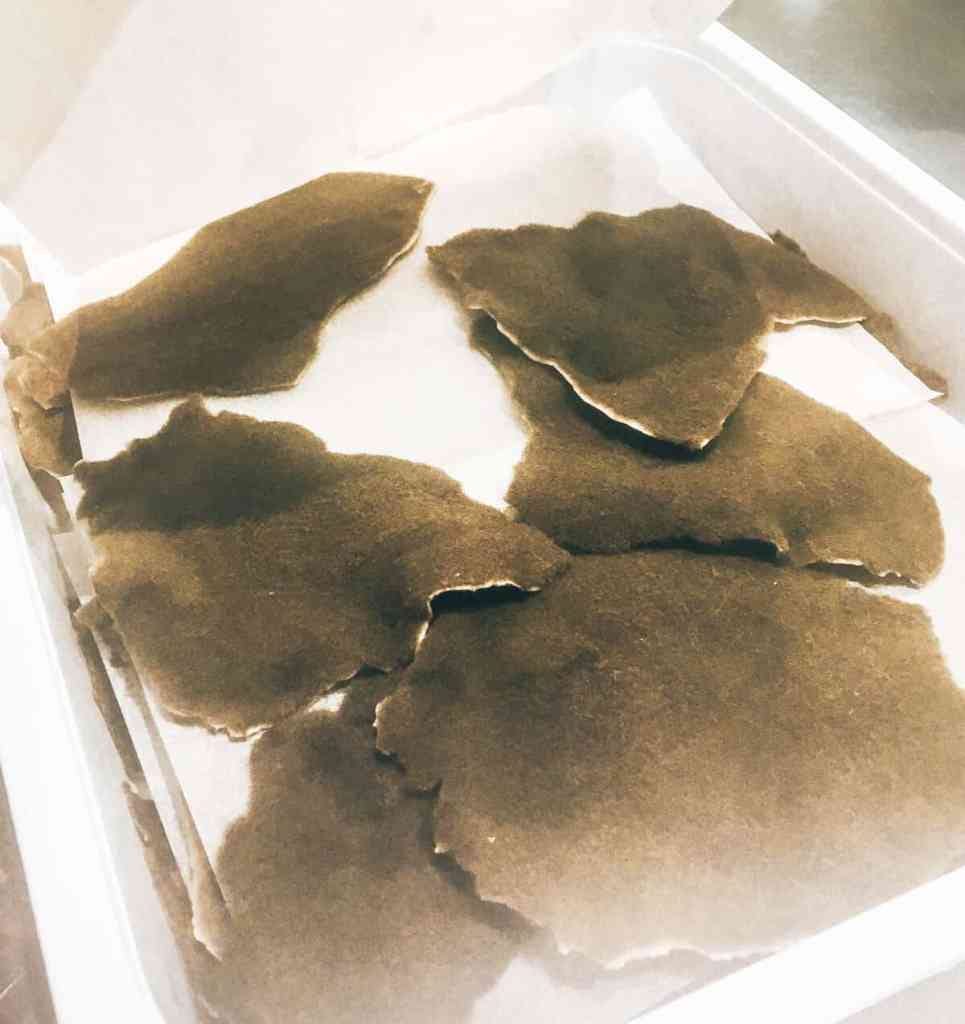Mugaritz chef, Andoni Aduriz is delivering a pre-service briefing. Like any good story-teller he is getting to his point, building up to the all important punch line.
“Tonight is a glimpse into what Mugaritz is all about,” he says “But it is possible that some people won’t like it.”
“If you have problems, you must blame me.”
Everyone laughs. Andoni is serious.
“No, really, I have no problem with this reaction, no problem at all.”
“I believe you don’t have to like something to like it.”
World’s best chef
Before us stands one of the world’s most influential chefs: Andoni Luiz Aduriz.
Radical and unorthodox, Andoni takes food right to the outer-boundaries of the expected, provoking and confusing, delighting and even, disgusting.
Michelin likes it. Or, at least they like what they don’t like enough to award Mugaritz in San Sebastian two Michelin stars – they have done every year since 2006.
The World’s 50 Best currently rank Mugaritz as the 9th best restaurant in the world.
Mugaritz Menu
Tonight, Andoni has left the Basque country. He has driven seven hours south to Alicante to join fellow chef, Maria Jose San Roman in celebrating the 20th anniversary of her restaurant, El Monastrell.
Basque and Mediterranean ingredients will bounce off each other in is a gastronomic onslaught of avant-garde technique.
Mugaritz will do one dish and then El Monastrell the next, over a 15-course menu.
Back to being a white belt
If Andoni is A-List, I’ve got a bit part in tonight’s production. Fresh out of culinary school, I’m 14 days into my first chef stage.
For 30 years, my world has been judo, a world in which I’m considered an expert; a 7th Dan black belt, a world champion, and an Olympic medallist.
But here in the kitchen, I am a white belt again. I’m a chef stagiare – an apprentice.
Reducing, restraining, refining
In about 10 minutes, the first customers will come through the door but Andoni is in no rush to finish the presentation.
This desire to share his knowledge has been evident all day.
“Over the years, we have tried to make things simpler at Mugaritz; reducing, restraining, refining,” says Andoni.
However, the simple sounds complex to me.
He talks of cow tendon, and of nine-day-old mould, of crab claws being picked under ultraviolet light, and of aromatic compounds and emulsifiers.
Somewhere around lamellar structures, I begin to struggle.
At times, Andoni (who teaches at the Basque Culinary Centre, The American Insititute of Culinary Arts and Harvard) dips into first-year chemistry degree material.
Is the food we cook an extension of our personality?
Casually dressed in converse trainers, jeans and a t-shirt, Andoni Aduriz looks the part; part rebel, part chef, part scientist and part intellectual.
Andoni trained for two years at El Bulli, Ferran Adria’s famous restaurant in Roses, near Girona.
“Adria opened my way of thinking, and the result of that is that he changed my whole life,” says Andoni. “El Bulli was an overdose of creativity and when I came back to San Sebastian, I was a different person.”
That creativity continues. Each year, Mugaritz closes for four months to allow the time and space for new concepts to be explored and refined. Creativity is what defines this chef.
Andoni continues to explain tonight’s dishes:
The Oxtail Sandwich: unusually delicious
“This is frankly, really delicious. Which is unusual for us. We don’t normally go for delicious, we normally aim for interesting.”
The oxtail sandwich, he explains, is filled with reduced oxtail, coated with oxtail powder and finished with an oxtail jus.
Spider Crab in Macadamia Milk: simple yet complex.
Served simply, in macadamia milk, with a sprinkle of pink peppercorn this dish looks so simple.
But it’s elaborate in its making. Only the fibres in the claws are used, and they are laboriously checked under ultraviolet light.
And then comes the dish that has got everyone talking: The Lamb’s Fur.
The Lamb’s Fur: a step too far?
“When people see this dish, they look at each other and ask themselves, is it edible? This is exactly the response I am looking for,” Andoni grins seriously.
I must admit, he has a point.
It reminds me, of the ten-year old interior carpet in the footwell of your car.
It doesn’t become any more appetising, when you know how it is made.
The fur is actually a mould; citrus gelatine incubated with tempeh until the fuzzy growth resembles the fleece of a young animal.
A piece of this ‘fur’ sits over very rare lamb.
Later, tonight this will be the stand-out dish of the evening.
It is the one dish the chefs can’t stop talking about.
It is also the dish that some of the diners send back, untouched.
A step too far?
Or is it? Isn’t that the step Andoni looks for, craves even? That extra step, the one that pushes beyond the limit.
I break off a piece of the fur to taste it. Slightly citrus. Neither is it delicious nor is it unpleasant – but I guess that is beside the point.
It confuses. It provokes.
‘You don’t have to like something to like it.’ In the days that come, those words will play over and over in my head.
There is a string of questions that follow this line of thought. Surely we cook food, so it tastes good? Isn’t that our ultimate goal as a chef? Aren’t we all aiming for delicious, above everything?
But here is one of the most celebrated chefs in the world saying otherwise, unconcerned about people liking his food, only that they react.
Andoni Aduriz is more concerned asking difficult questions that open minds – and isn’t that something so much grander?
Now, and then you meet someone that by broadens your horizons: Andoni is one of these people.
He pushes you to rethink the basics.
Boundaries are moved back, and amongst the space that is created, questions are asked.
From the confusion, comes questions.
And from the questions, a new perspective.
What’s in the next episode?
In the next episode, things get foamy. Hollandaise, with a siphon.
Add your email to get the next episode:









